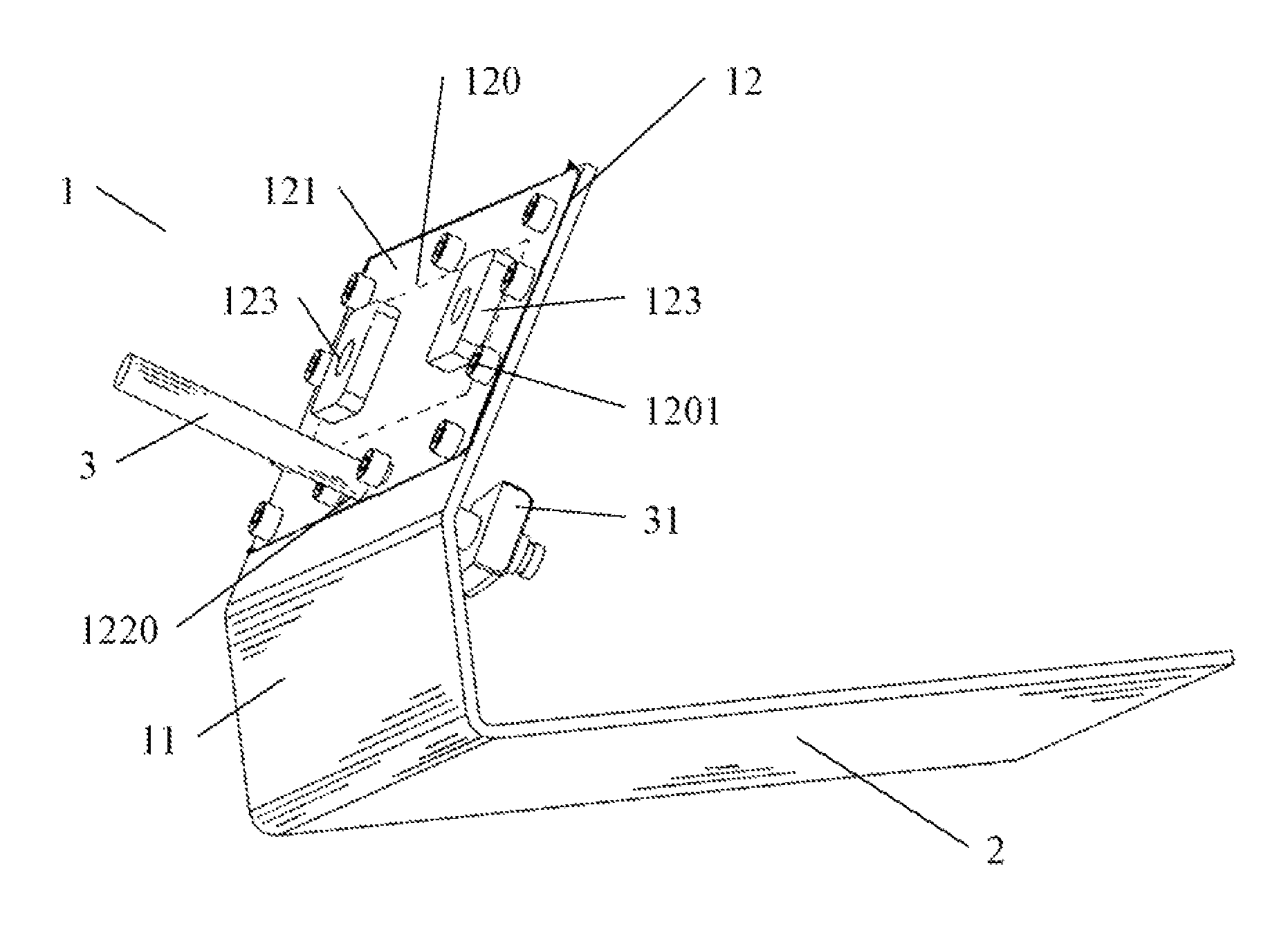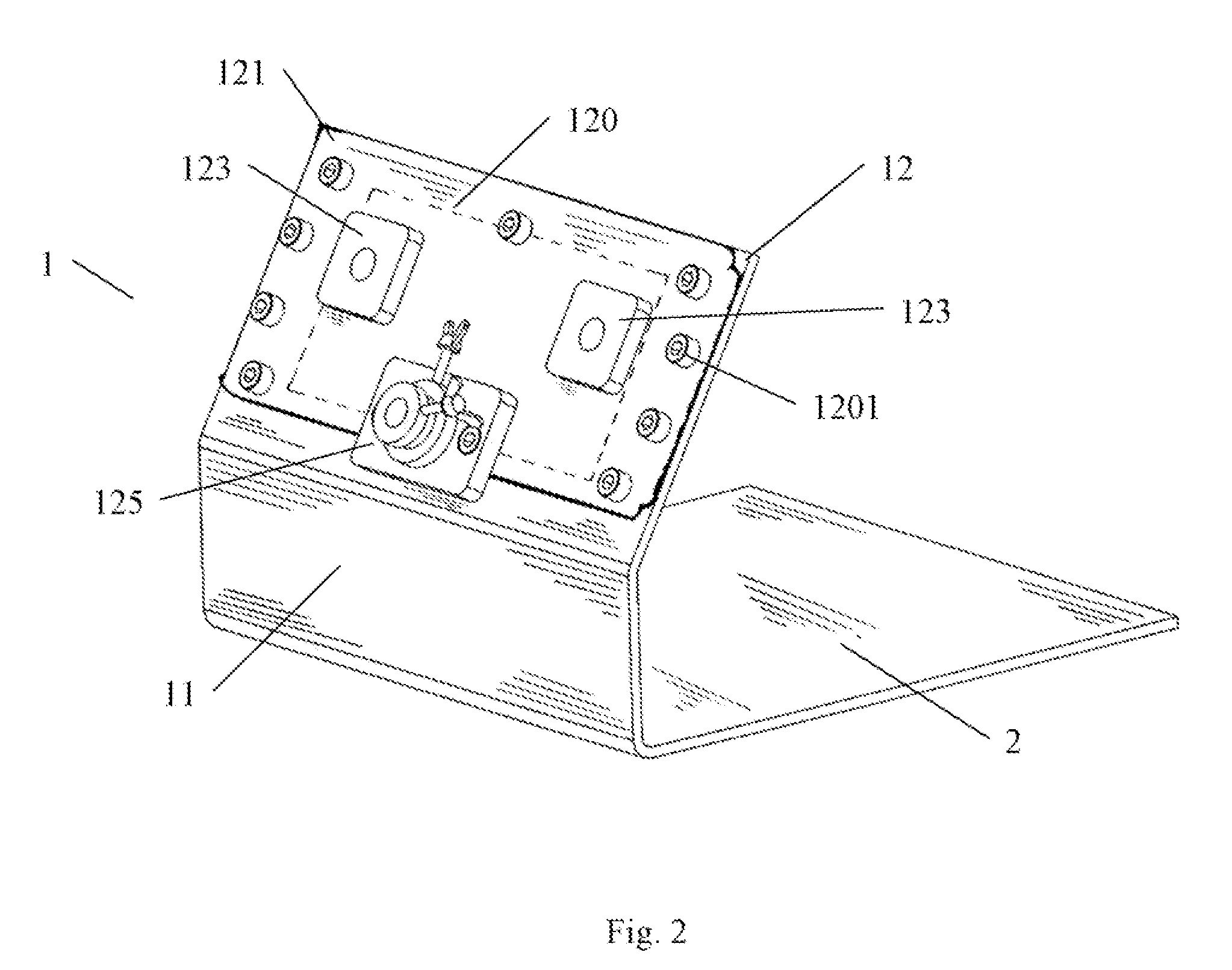Laparoscopic trainer and method of training
a trainer and laparoscopic technology, applied in the field of surgical training, can solve the problems of high cost of laboratory animals for surgical training, surgeons are not able to rely on their sense of feel and direct tactile response during laparoscopic surgery, and achieve the effect of low cos
- Summary
- Abstract
- Description
- Claims
- Application Information
AI Technical Summary
Benefits of technology
Problems solved by technology
Method used
Image
Examples
Embodiment Construction
[0036]A trainer for surgeons to learn and practice laparoscopic surgical procedures is depicted generally in FIG. 1. The device comprises a face wall 1 and base 2. The base 2 is arranged to receive an operable structure. The face wall 1 is extended upwardly from a side of the base 2. The face wall 1 and base 2 both are basically formed from an opaque material. It will be appreciated that in other embodiments, the base 2 and a front wall 11, extended upwardly from the base 2, of the face wall 1 could be also formed from a transparent material. Extending upwardly and inwardly from the upper edge of the front wall 11 is an upper wall 12 of the face wall 1. The angle of the upper wall 12 relative to front wall 11 is greater than 90 degree. The angle is frequently set between 110 degree and 165 degree. The preferable angle is around from 120 degree to 160 degree. The most preferable angle is around from 130 degree to 150 degree. The position and orientation of the upper wall 12 of the fa...
PUM
 Login to View More
Login to View More Abstract
Description
Claims
Application Information
 Login to View More
Login to View More - R&D
- Intellectual Property
- Life Sciences
- Materials
- Tech Scout
- Unparalleled Data Quality
- Higher Quality Content
- 60% Fewer Hallucinations
Browse by: Latest US Patents, China's latest patents, Technical Efficacy Thesaurus, Application Domain, Technology Topic, Popular Technical Reports.
© 2025 PatSnap. All rights reserved.Legal|Privacy policy|Modern Slavery Act Transparency Statement|Sitemap|About US| Contact US: help@patsnap.com



